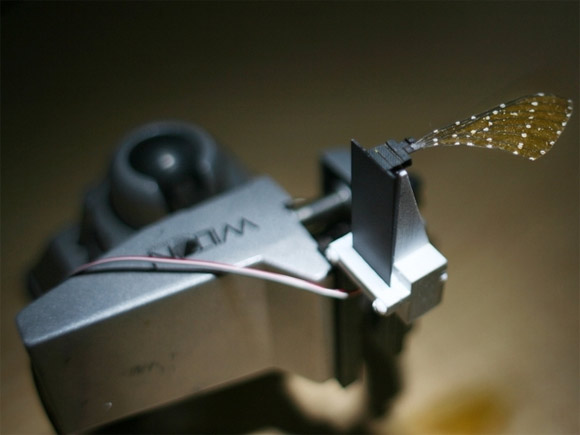“If you close your eyes and think of a fat pigeon, that’s about the biggest size that we want to use,” says Leslie Perkins, who worked with the micro program at the Air Force Research Laboratory. She says the smallest would be about the size of a dragonfly.
What is she talking about you ask? Well, at the Wright Patterson Air Force Base in Dayton, Ohio, some of the Ph.D. candidates are working on micro air vehicles that would be used to help the Air Force spy!

These tiny flying machines for the military are “bio-inspired” and will be remotely piloted for 24 hour surveillance. A carbon-fiber wing, said to be around the size of your thumb is connected to a small motor and poised to flap 30 times per second.
“The individual fibers are about 7 microns in diameter,” says Maj. Ryan O’Hara. The average size human hair is about 75 microns. “So we take these very, very thin carbon fibers, and we put them in epoxy resin, and we lay them up in different orientations.”
Ph.D. candidate Steve Ross is about ready to get his tiny quad-rotor helicopter flying, which is about the size of a laptop and comes with motors that work in opposition, allowing it to rise, dip and bank. Unfortunately for now, the battery life expectancy is very low. His plan? “Hang a couple on a power line to recharge batteries, send one of them on-site and you just cycle through like you were coming off of a tanker and you can keep one guy on station all the time and have a continuous presence.
We are glad to see carbon fiber helping in this unique type of aerospace as they’re perfect for surveillance and we’re excited to see how these micromachine bugs work out.
[Source: NPR]